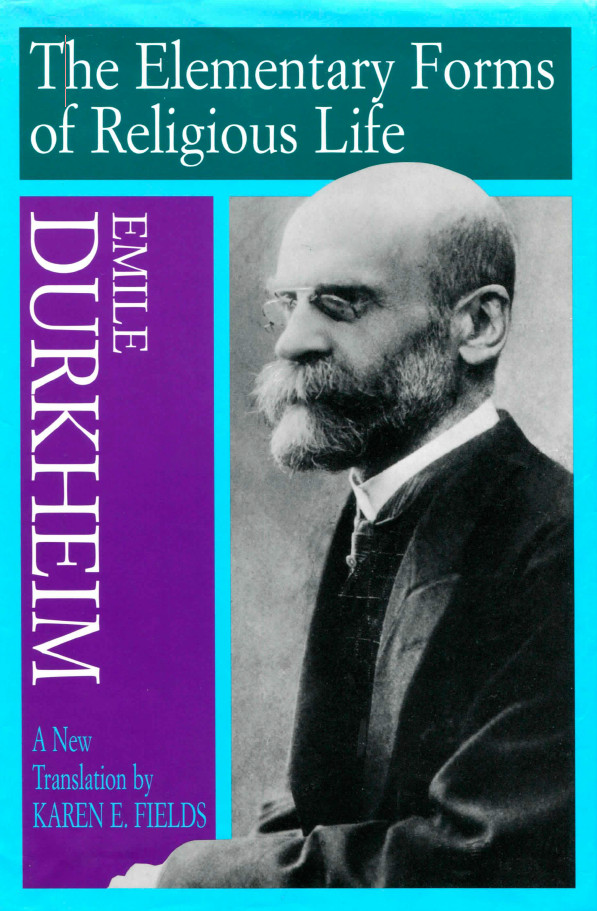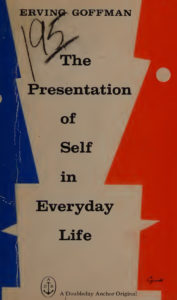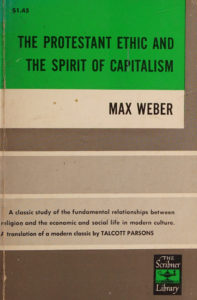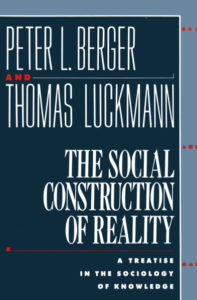INTRODUCTION
Subject of the Study: Religious Sociology and the Theory of Knowledge
I. Main subject of the book: analysis of the simplest known religion, to determine the elementary forms of religious life. • Why they are easier to arrive at and explain through primitive religions.
II. Secondary subject: origin of the fundamental notions or categories of thought. • Reasons for believing their origin to be religious and consequently social. • How a means of regenerating the theory of knowledge can be seen from this point of view.
BOOK ONE: PRELIMINARY QUESTIONS
Chapter One: Definition of Religious Phenomena and of Religion
The usefulness of a preliminary definition of religion; method to be followed in arriving at that definition. • Why the usual definitions should be examined first.
I. Religion defined by the supernatural and the mysterious. • Criticism. The idea of mystery was not present at the beginning.
II. Religion defined in relation to the idea of God or a spiritual being. Religions without gods. • Rites in deistic religions that imply no idea of deity.
III. Search for a positive definition. • Distinction between beliefs and rites. Definition of beliefs. • First characteristic: bipartite division of things into sacred and profane. • Distinguishing traits of that division. • Definition of rites in relation to beliefs. • Definition of religion.
IV Necessity of another characteristic to distinguish magic from religion. • The idea of Church. • Do individual religions exclude the idea of Church?
Chapter Two: The Leading Conceptions of the Elementary Religion: Animism
Distinction between animism and naturism
I. The three theses of animism: (1) genesis of the idea of soul; (2) formation of the idea of spirit; (3) transformation of the cult of spirits into the cult of nature.
II. Criticism of the first thesis: Distinction between the ideas of soul and of double. • Dreams do not account for the idea of soul.
III. Criticism of the second thesis. Death does not explain the transforma-tion of the soul into a spirit. • The cult of the souls of the dead is not primitive.
IV. Criticism of the third thesis. The anthropomorphic instinct. Spencer's criticism of it; reservations on this subject. Examination of the facts by which the existence of that instinct is said to be proved. • Difference between the soul and the spirits of nature. Religious anthropomorphism is not primitive.
V. • Conclusion: Animism reduces religion to nothing more than a system of hallucinations.
Chapter Three: The Leading Conceptions of the Elementary Religion (Continuation): Naturism
Review of the theory
I. • Exposition of naturism according to Max Muller.
II. • If the object of religion is to express natural forces, then how it could have survived is hard to see, for it expresses them mistakenly. The alleged distinction between religion and mythology.
III. • Naturism does not explain the division of things into sacred and profane.
Chapter Four: Totemism as Elementary Religion: Review of the Question. Method of Treating It
I. • Brief history of the question of totemism.
II. • Methodological reasons for which the study will be based mainly on Australian totemism. • Concerning the place to be given to American examples.
BOOK TWO: THE ELEMENTARY BELIEFS
Chapter One: The Principal Totemic Beliefs: The Totem as Name and as Emblem
I. • Definition of the clan. • The totem as name of the clan. • Nature of the things that serve as totems. • Ways in which the totem is acquired. • The totems of phratries and of marriage classes.
II. • The totem as emblem. • Totemic designs engraved or sculpted on ob-jects, and tattooed or painted on bodies.
III. • Sacredness of the totemic emblem. • The churingas. • The nurtunja. • The waninga. • Conventional nature of totemic emblems.
Chapter Two: The Principal Totemic Beliefs (Continued): The Totemic Animal and Man
I. • Sacredness of the totemic animals. • Prohibition against eating and killing them and against picking totemic plants. • Various mitigations of those pro-hibitions. • Prohibitions of contact. • The sacredness of the animal is less pro-nounced than that of the emblem.
II. • Man. • His kinship with the totemic plant or animal. • Various myths ex-plaining that kinship. • The sacredness of the man is more apparent in certain parts of the body: the blood, the hair, etc. • How this quality varies with sex and age. • Totemism is neither animal nor plant worship.
Chapter Three: The Principal Totemic Beliefs (Continued): The Cosmological System of Totemism and the Notion of Kind
I. • Classifications of things by clan, phratry, and class.
II. • Origin of the idea of genus: The first classifications of things take their schemes from society. • Differences between the feeling of resemblance and the idea of genus. • Why that idea is of social origin.
III. • Religious meaning of these classifications: All things classified within a clan participate in the nature of the totem and in its sacredness. The cosmo-logical system of totemism. • Totemism as tribal religion.
Chapter Four: The Principal Totemic Beliefs (End): The Individual Totem and the Sexual Totem
I. The individual totem as first name; its sacredness. • The individual totem as personal emblem. • Bonds between man and his individual totem. • Links with the collective totem.
II. Totems of sexual groups. • Resemblances and differences between col-lective and individual totems. • Their tribal character.
Chapter Five: Origins of These Beliefs Critical Examination of the Theories
I. • Theories that derive totemism from an earlier religion: from the ancestor cult (Wilken and Tylor); from the cult of nature (Jevons). • Criticism of these theories.
II. • Theories that derive collective totemism from individual totemism. • Origins ascribed by these theories to the individual totem (Frazer, Boas, Hill Tout) • Improbability of these hypotheses. • Arguments for the priority of the collective totem.
III. • Recent theory of Frazer: conceptional and local totemism. • The ques-tion begging on which it rests. • The religious character of the totem is denied. • Local totemism is not primitive.
IV. • Theory of Lang: the totem is merely a name. • Difficulties in explain-ing the religious character of totemic practices from this point of view.
V • All these theories explain totemism only by postulating earlier religious notions.
Chapter Six: Origins of These Beliefs (Continued): The Notion of Totemic Principle, or Mana, and the Idea of Force
I. • The notion of force or totemic principle. • Its ubiquity. • Its simultane-ously physical and moral character.
II. • Similar conceptions in other lower societies. • Gods in Samoa. • Wakan of the Sioux, orenda of the Iroquois, mana in Melanesia. • Relationships of these notions with totemism. • Arunkulta of the Arunta.
III. • The logical priority of the notion of impersonal force over the various mythical personalities. • Recent theories that tend to accept this priority.
IV. • The notion of religious force is the prototype of the notion of force in general.
Chapter Seven: Origins of These Beliefs (Conclusion): Origin of the Notion of Totemic Principle, or Mana
I. • The totemic principle is the clan, but the clan thought of in tangible form.
II. • General reasons society is capable of arousing the sensation of the sacred and the divine. • Society as an imperative moral power; the notion of moral authority. • Society as a force that raises the individual above himself. • Facts proving that society creates the sacred.
III. • Reasons peculiar to the Australian societies. • The two phases through which the life of these societies alternately passes: dispersal and concentra-tion. • Great collective effervescence during the periods of concentration. Examples. • How the religious idea is born from that effervescence. Why the collective force was conceived of in totemic forms: The totem is the emblem of the clan. • Explanation of the principal totemic beliefs.
IV. • Religion is not a product of fear. • It expresses something real. • Its fun-damental idealism. • That idealism is a general trait of collective mentality. • Why religious forces are external to their substrates. • On the principle the part equals the whole.
V. • Origin of the notion of emblem: use of emblems, a necessary condition of collective representations. • Why the clan has taken its emblems from the animal and plant kingdoms.
VI. • On the tendency of the primitive to merge realms and classes that we distinguish. • Origins of those fusions. • How they paved the way for scien-tific explanations. • They do not preclude the tendency to create distinctions and oppositions.
Chapter Eight: The Notion of Soul
I. • Analysis of the notion of soul in the Australian societies.
II. • Genesis of that notion. • The doctrine of reincarnation according to Spencer and Gillen: It implies that the soul is a portion of the totemic principle. • Examination of the facts reported by Strehlow; they confirm the totemic nature of the soul.
III. • Generality of the notion of reincarnation. • Evidence to support the origin proposed.
IV. • The antithesis between soul and body: what is objective about it. Relationships between the individual soul and the collective soul. • The notion of soul is not chronologically after that of mana.
V • Hypothesis to explain the belief in life after death.
VI. • The idea of soul and the idea of person; impersonal elements of personality.
Chapter Nine: The Notion of Spirits and Gods
I. • Difference between soul and spirit. • The souls of the mythical ancestors are spirits with set functions. • Relations between the ancestral spirit, the in-dividual soul, and the individual
totem. • Explanation of the last. • Its socio-logical significance.
II. • Spirits and magic.
III. • Civilizing heroes.
IV. • High gods. • Their origin. • Their relationship with the totemic system as a whole. • Their tribal and international character.
V. • Unity of the totemic system.
BOOK III: THE PRINCIPAL MODES OF RITUAL CONDUCT
Chapter One: The Negative Cult and Its Functions: The Ascetic Rites
I. • The system of prohibitions • Magic and religious prohibitions. Prohibi-tions between sacred things of different kinds. Prohibitions between sacred and profane. • These last are the basis of the negative cult. • Principal types of these prohibitions; their reduction to two basic types.
II. • Observance of the prohibitions modifies the religious states of individu-als. Cases in which that efficacy is especially apparent: ascetic practices. • Re-ligious efficacy of pain. • Social function of asceticism.
III. • Explanation of the system of prohibitions: antagonism of the sacred and the profane; contagiousness of the sacred.
IV. • Causes of this contagiousness. • It cannot be explained by the laws of the association of ideas. • It arises because religious forces are external to their substrates. Logical interest of this property of the religious forces.
Chapter Two: The Positive Cult: The Elements of the Sacrifice
The Intichiuma ceremony in the tribes of central Australia. • Various forms it exhibits.
I. • The Arunta form. • The two phases. • Analysis of the first: visiting sacred places, spreading sacred dust, shedding blood, etc., to bring about the repro-duction of the totemic species.
II. • Second phase: ritual eating of the totemic plant or animal.
III. • Interpretation of the ceremony as a whole. • The second rite consists of a communion meal. • Reason for that communion.
IV. • The rites of the first phase consist of offerings. • Analogies with sacrifi-cial offerings. • Hence the Intichiuma contains the two elements of sacrifice. • Interest of these facts for the theory of sacrifice.
V • On the alleged absurdity of the sacrificial offerings. • How they are ex-plained: dependence of sacred beings on their worshippers. • Explanation of Contents the circle in which sacrifice seems to move. • Origin of the periodicity of positive rites.
Chapter Three: The Positive Cult (Continuation): Mimetic Rites and the Principle of Causality
I. • Nature of the mimetic rites. • Examples of ceremonies in which they are used to ensure the fertility of the species.
II. • They rest on this principle: Like produces like. • The explanation pro-posed by the anthropological school examined. • Why an animal or plant is imitated. • Why physical efficacy is ascribed to these movements. • Faith. • In what sense faith is founded upon experience. • The principles of magic were born in religion.
III. • The foregoing principle considered as being among the first statements of the principle of causality. • Social conditions on which the principle of causality depends. • The idea of impersonal force or power is of social origin. • The necessity of the causal judgment explained by the authority inherent in social imperatives.
Chapter Four: The Positive Cult (Continuation): Representative or Commemorative Rites
I. • Representative rites that have physical efficacy. • Their relationships with the ceremonies described previously. • Their influence is wholly moral.
II. • Representative rites without physical efficacy. • They confirm the pre-ceding results. • The recreational aspect of religion: its importance and raisons d'être. • The idea of the feast.
III. • Ambiguity of function in the various ceremonies studied; they are sub-stitutes for one another. • How this ambiguity confirms the proposed theory.
Chapter Five: The Piacular Rites and the Ambiguity of the Notion of the Sacred
Definition of the piacular rite.
I. • The positive rites of mourning. Description of these rites.
II. • How they are explained. • They are not a display of private feelings. • Neither can the malice ascribed to the soul of the deceased account for them. • They arise from the spiritual state in which the group finds itself. • Analysis of that state. How it comes to an end through mourning. • Parallel changes in the manner in which the soul of the deceased is conceived.
III. • Other piacular rites: following public mourning, an insufficient harvest, a drought, or the southern lights. • Rarity of these rites in Australia. • How they are explained.
IV • The two forms of the sacred: pure and impure. • Their antagonism. • Their kinship. • Ambiguity of the notion of the sacred. • Explanation of that ambiguity. • All the rites have this character.
CONCLUSION
To what extent the results obtained can be generalized.
I. • Religion rests on an experience that is well-founded but not privileged. • Necessity of a science to get at the reality that is the foundation of this experience. • What that reality is: human groupings. • Human meaning of re-ligion. • On the objection that opposes the ideal society to the real one. • How the individualism and the cosmopolitanism of religion are explained in this theory.
II. • What is eternal about religion. • On the conflict between religion and science; it affects only the speculative function of religion. • What the destiny of that function seems to be.
III. • How can society be a source of logical—that is to say, conceptual— thought? Definition of the concept: not the same as the general idea; characterized by its impersonality and its communicability. • It has a collective origin. • Analysis of its content testifies in the same way. • Collective representations as type-notions in which individuals share. • On the objection that they would be impersonal only if they were true. • Conceptual thought is contemporaneous with humanity.
IV. • How the categories express social things. • The category par excellence is the concept of totality, which can be suggested only by society. • Why the relationships expressed by the categories could become conscious only in society. • Society is not an alogical being. • How the categories tend to become detached from geographically defined groupings. • The unity of science, on the one hand, and of religion and morality, on the other. • How society accounts for that unity. • Explanation of the role ascribed to society: its creative power. • Impact of sociology upon the science of man.




